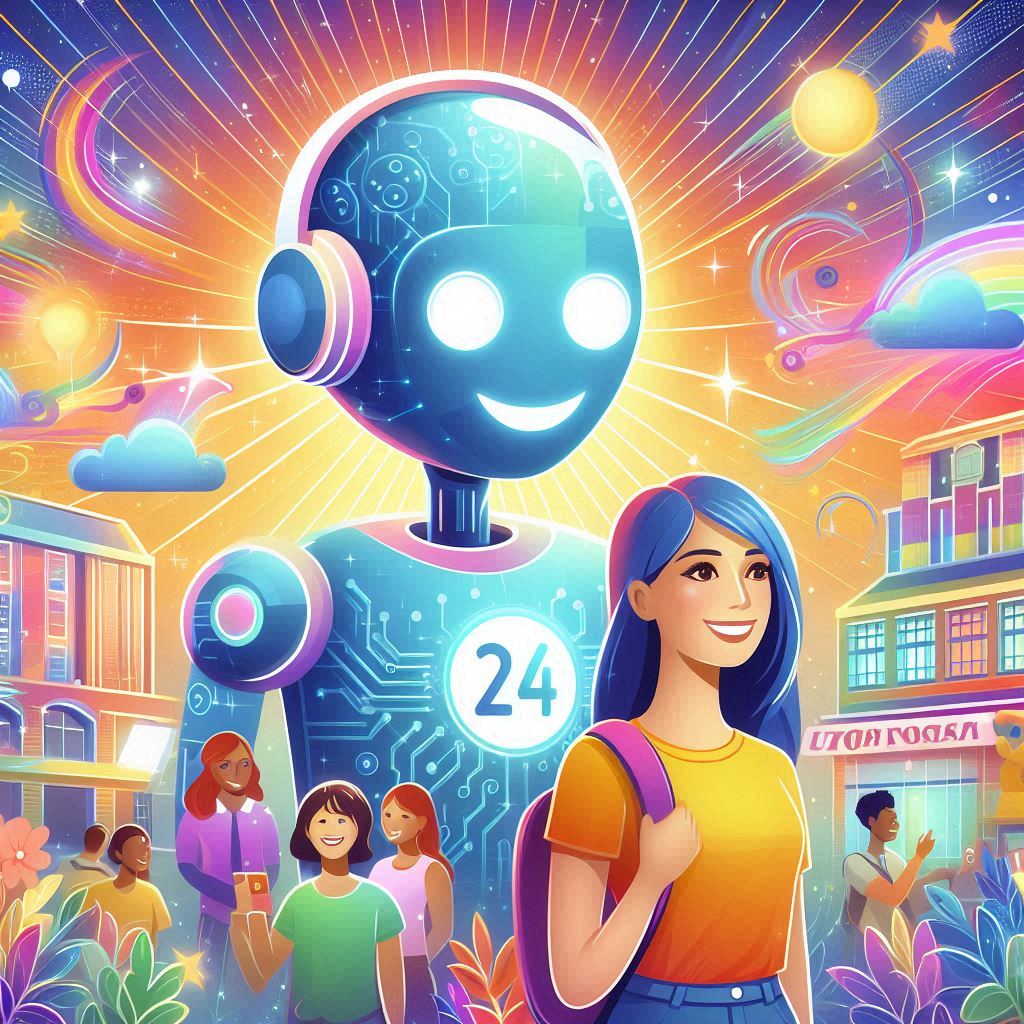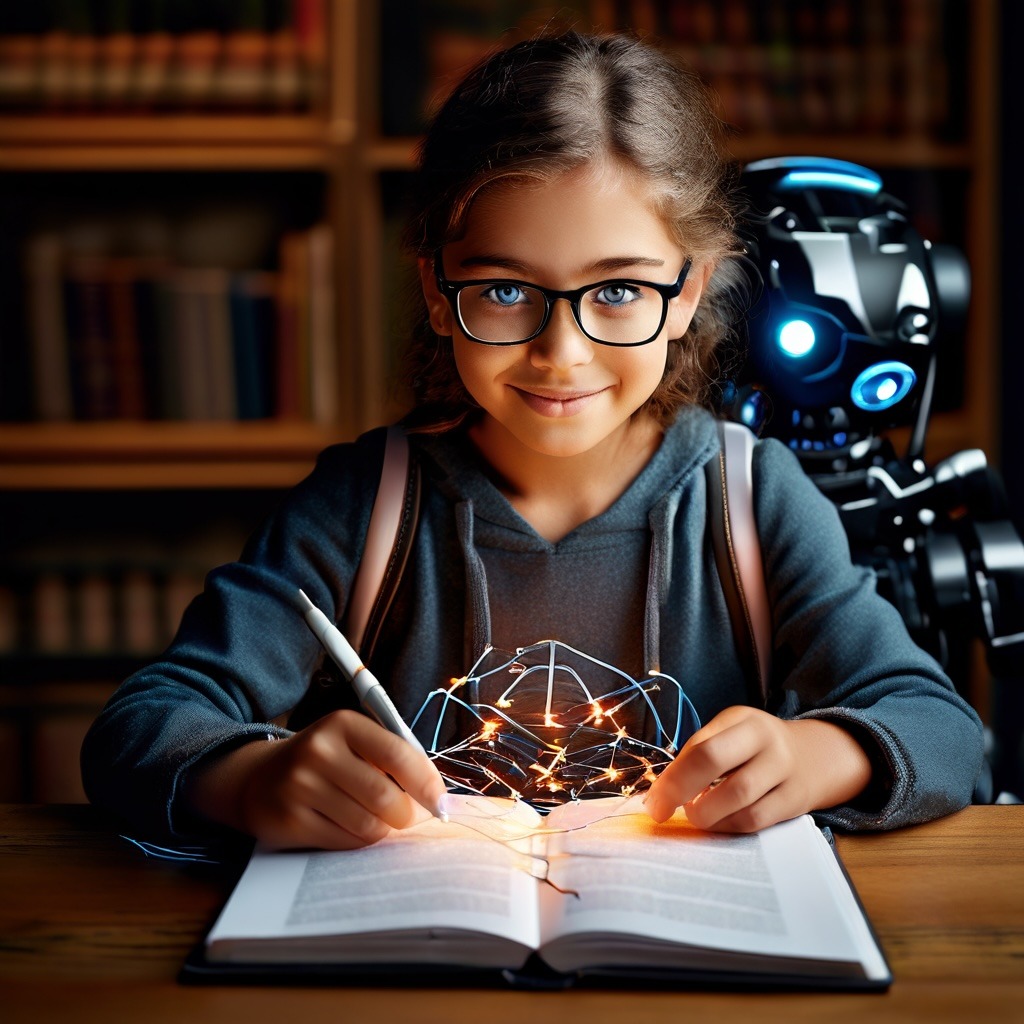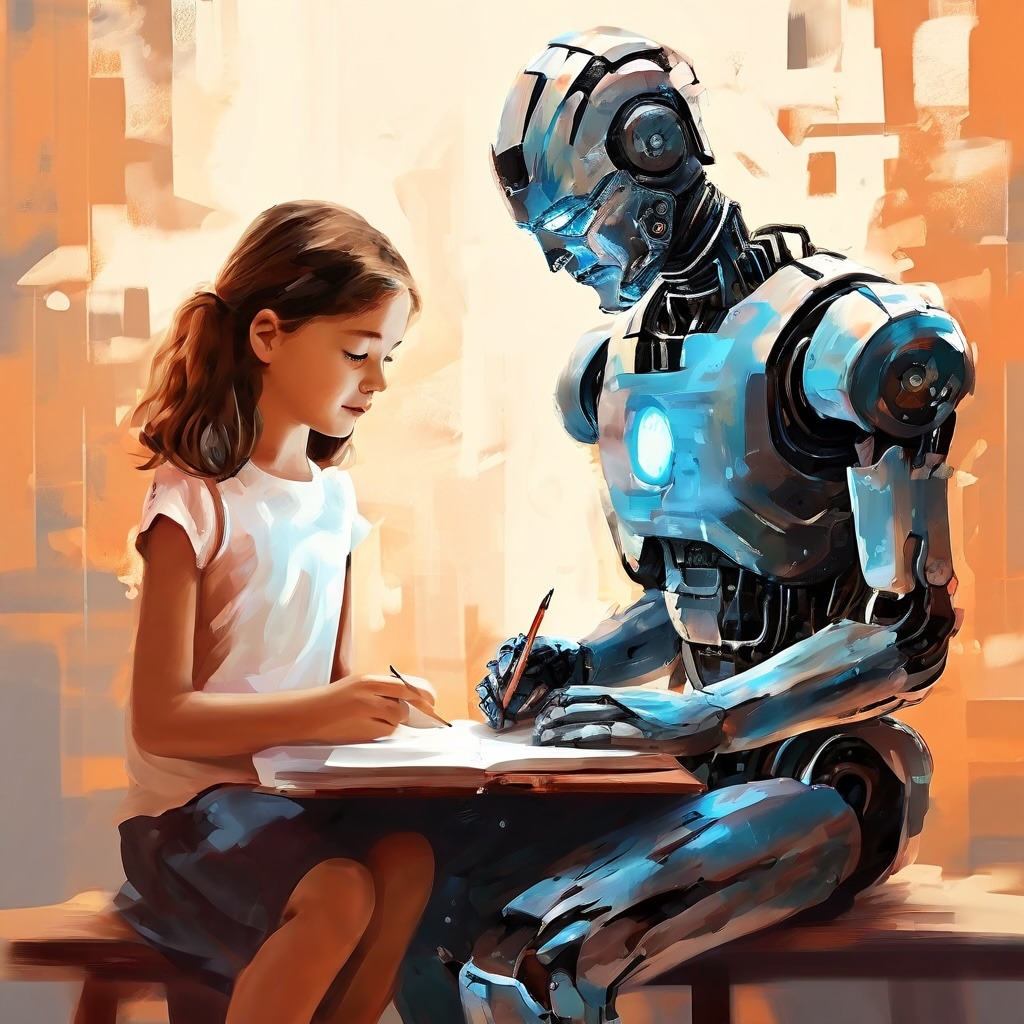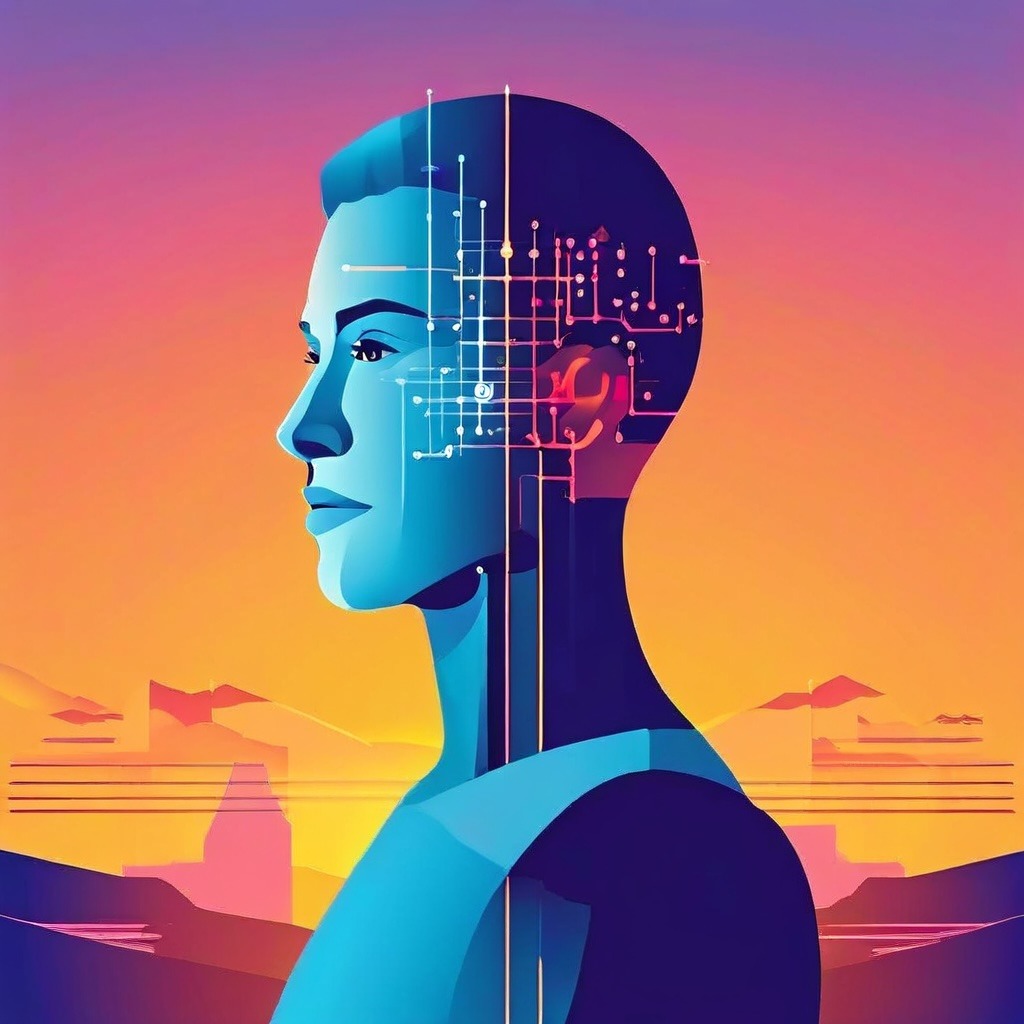A Comprehensive Guide for Educators
Introduction
Artificial intelligence (AI) is transforming education by offering 24/7 student support, ensuring personalized learning experiences, and reducing teacher workload. AI-powered tutoring systems, chatbots, and adaptive learning platforms provide continuous academic assistance, catering to diverse learning styles and needs. This comprehensive guide delves into the myriad benefits of AI in education, the challenges of integrating these technologies, and their future potential.
The Need for 24/7 Student Support
Addressing Learning Gaps
Traditional classroom models, with their fixed schedules, often fail to address the diverse and immediate needs of students. Learning gaps can quickly widen if not addressed promptly. In conventional settings, a student struggling with a concept must wait until the next class or scheduled office hours to seek help. This delay can lead to confusion and further misunderstanding. AI-driven support systems offer instant assistance, ensuring that minor misunderstandings do not evolve into significant academic obstacles. These systems can provide explanations, tutorials, and exercises that address the specific areas where students are having difficulty, helping them to understand the material more thoroughly and avoid falling behind.
Catering to Diverse Learning Styles
Every student has a unique way of learning—some grasp concepts better through visual aids, others through auditory instruction, and yet others through hands-on activities. Traditional teaching methods often struggle to accommodate these diverse learning styles within the constraints of a classroom setting. AI can adapt to these individual preferences, providing tailored resources and explanations that enhance comprehension and retention. For example, an AI system can present a math problem as a visual animation for visual learners, provide an auditory explanation for those who learn better through listening, or offer interactive exercises for kinesthetic learners. This level of personalization can significantly improve students’ understanding and retention of material.
Reducing Anxiety and Stress
Academic pressures can lead to significant stress among students. With 24/7 access to AI support, students can get help whenever needed, reducing stress and fostering a positive learning environment. Knowing that they can get immediate assistance with their homework, projects, or exam preparation can alleviate the anxiety that comes with academic deadlines. This support is especially crucial during critical times such as exam periods or when working on major assignments. By providing constant access to help, AI can help students manage their workload more effectively and maintain a healthier balance between their academic and personal lives.
How AI Provides 24/7 Student Support
Intelligent Tutoring Systems (ITS)
Intelligent Tutoring Systems (ITS) are AI-powered platforms that provide personalized instruction and feedback to students. These systems assess a student’s understanding of a topic, identify areas of weakness, and offer targeted exercises to improve their skills. By simulating one-on-one tutoring sessions, ITS can provide detailed explanations, hints, and encouragement, mimicking the support of a human tutor. This continuous, adaptive learning process helps students master concepts at their own pace. For instance, an ITS for math might provide step-by-step guidance on solving algebra problems, offering hints and additional practice problems tailored to the student’s specific difficulties.
AI-Powered Chatbots
AI chatbots are increasingly sophisticated, capable of answering a wide range of questions related to course content, administrative procedures, and general academic advice. Integrated into learning management systems (LMS) or educational websites, these chatbots provide students with immediate answers to their queries. Advanced chatbots can engage in meaningful conversations, helping students navigate complex problems and offering suggestions for further study. For example, a chatbot can help a student understand a confusing biology concept by breaking it down into simpler parts or directing them to relevant resources and tutorials. This immediate support helps keep students engaged and on track with their studies.
Automated Essay Scoring
Grading essays and providing constructive feedback is one of the most time-consuming tasks for teachers. AI-powered tools can automate this process, offering instant evaluations and detailed feedback on writing assignments. These systems use natural language processing (NLP) algorithms to assess grammar, coherence, and argument strength, giving students the opportunity to revise and improve their work before submitting it for final grading. This not only speeds up the feedback process but also helps students learn from their mistakes and improve their writing skills over time. Additionally, automated essay scoring ensures consistency and objectivity in grading, which can be difficult to achieve manually.
Virtual Learning Assistants (VLA)
Virtual Learning Assistants (VLAs) are AI-driven entities designed to support students throughout their learning journey. VLAs can remind students of upcoming deadlines, suggest study schedules, and recommend resources based on their progress and performance. By acting as a personal academic advisor, VLAs help students stay organized and motivated. For example, a VLA can alert a student about an upcoming exam, suggest a study plan based on their current understanding of the material, and provide resources such as practice tests and review materials. This ongoing support helps students manage their time more effectively and stay focused on their academic goals.
Adaptive Learning Platforms
Adaptive learning platforms leverage AI to create personalized learning experiences. These platforms continuously analyze a student’s performance and adjust the difficulty and type of content presented to them. By ensuring that students are always working at an appropriate level of challenge, adaptive learning platforms can enhance engagement and promote mastery of subjects. For instance, if a student excels in a particular topic, the platform can introduce more advanced material to keep them challenged. Conversely, if a student struggles, the platform can provide additional resources and practice to help them improve. This tailored approach helps ensure that all students can achieve their full potential.
Benefits for Teachers
Reduced Administrative Burden
Administrative tasks such as answering routine questions, grading assignments, and tracking student progress can consume a significant portion of a teacher’s time. AI can automate many of these tasks, freeing up teachers to dedicate more time to lesson planning, professional development, and personalized student interactions. For example, an AI system can handle the bulk of grading for multiple-choice tests and homework assignments, allowing teachers to focus on more complex and subjective assessments. This reduction in administrative workload can help teachers manage their time more effectively and reduce burnout.
Enhanced Student Engagement
AI tools can provide data-driven insights into student performance and engagement levels. Teachers can use this information to identify students who may be struggling or disengaged and intervene proactively. By leveraging AI’s ability to monitor and analyze student behavior, teachers can create more engaging and supportive learning environments. For instance, an AI system might alert a teacher that a student has not logged into the LMS for several days, prompting the teacher to reach out and offer assistance. This proactive approach can help prevent students from falling behind and keep them engaged in their studies.
Improved Differentiated Instruction
Differentiated instruction is a teaching approach that tailors learning experiences to meet the diverse needs of students. AI can facilitate differentiated instruction by providing personalized learning paths for each student. Teachers can use AI-generated data to understand individual learning preferences and challenges, allowing them to design more effective and inclusive lessons. For example, an AI system might identify that a student learns best through visual aids and suggest incorporating more diagrams and videos into their lessons. This level of personalization can help ensure that all students have the opportunity to succeed.
Focus on Higher-Order Teaching
With AI handling routine tasks and providing basic support, teachers can concentrate on higher-order teaching activities that require human expertise and creativity. This includes fostering critical thinking, encouraging collaborative learning, and nurturing students’ social and emotional development. For example, while an AI tutor provides practice problems and feedback on basic skills, the teacher can focus on leading discussions, facilitating group projects, and developing students’ problem-solving abilities. By offloading mundane tasks to AI, teachers can become more effective facilitators of holistic education.
Professional Development
AI can also support teachers’ professional growth. Personalized recommendations for professional development opportunities based on a teacher’s performance and interests can help educators stay current with the latest pedagogical strategies and technological advancements. AI-driven analytics can highlight areas where teachers may need additional support, enabling targeted professional development initiatives. For example, an AI system might analyze student performance data and suggest that a teacher attend a workshop on differentiated instruction or formative assessment techniques. This targeted approach to professional development can help teachers continually improve their skills and effectiveness.
Integration Challenges and Considerations
Ensuring Equity and Accessibility
One of the primary concerns is ensuring that all students have equal access to AI-driven support. Socioeconomic disparities can result in unequal access to technology and the internet, exacerbating the digital divide. Educational institutions must work to provide the necessary resources and infrastructure to ensure that every student can benefit from AI support, regardless of their background. This might include providing devices and internet access to students in need, as well as training students and teachers on how to effectively use AI tools.
Data Privacy and Security
The use of AI in education involves the collection and analysis of vast amounts of student data. Protecting this data from breaches and misuse is paramount. Schools and AI providers must adhere to strict data privacy regulations and implement robust security measures to safeguard sensitive information. This includes ensuring that data is encrypted, access is controlled, and that there are protocols in place for responding to data breaches. Additionally, schools should be transparent with students and parents about how data is collected, used, and protected.
Ethical Considerations
AI systems must be designed and deployed ethically to avoid biases and ensure fairness. Algorithms can inadvertently perpetuate existing biases if not carefully monitored and adjusted. Educational institutions must work with AI developers to create transparent, accountable, and unbiased AI systems that promote equity and inclusivity. This includes regularly auditing AI systems for bias, ensuring diverse representation in training data, and involving stakeholders in the development and implementation process.
Teacher Training and Support
Successful integration of AI requires adequate training and support for teachers. Educators must be equipped with the knowledge and skills to effectively use AI tools in their classrooms. Ongoing professional development and access to technical support are essential to ensure that teachers can leverage AI to its full potential. This might include workshops, online courses, and one-on-one coaching to help teachers become comfortable with AI technology and understand how to integrate it into their teaching practice.
Balancing AI and Human Interaction
While AI can provide valuable support, it should not replace human interaction in education. The teacher-student relationship is fundamental to effective learning, and AI should be seen as a complementary tool rather than a substitute for human educators. Striking the right balance between AI and human interaction is crucial to maintaining a supportive and nurturing learning environment. This means ensuring that AI tools are used to augment, rather than replace, the personal connections and mentorship that teachers provide.
Case Studies and Success Stories
Case Study 1: Georgia State University’s Chatbot “Pounce”
Georgia State University implemented an AI-powered chatbot named “Pounce” to assist students with administrative and academic queries. Pounce was designed to answer questions related to enrollment, financial aid, course registration, and more. The chatbot’s ability to provide instant, accurate responses significantly reduced the administrative burden on staff and improved student satisfaction. Additionally, Pounce helped identify at-risk students by monitoring their interactions and flagging potential issues for human intervention. This proactive approach enabled the university to provide timely support to students in need, improving retention and success rates.
Case Study 2: Duolingo’s AI-Powered Language Learning
Duolingo, a popular language learning platform, leverages AI to provide personalized language instruction to millions of users worldwide. The platform uses machine learning algorithms to adapt lessons based on a user’s progress and performance. By offering immediate feedback and tailored exercises, Duolingo ensures that learners receive continuous support and can practice their language skills at any time. This AI-driven approach has made language learning more accessible and effective for people of all ages. Users can learn at their own pace, receive instant corrections, and access a vast array of learning resources, making language acquisition more engaging and efficient.
Case Study 3: Carnegie Learning’s Cognitive Tutor
Carnegie Learning developed a math tutoring system called Cognitive Tutor, which uses AI to provide personalized instruction and feedback to students. The system adapts to each student’s learning pace and style, offering targeted exercises and hints to address their specific needs. Studies have shown that students using Cognitive Tutor outperform their peers in traditional classroom settings, demonstrating the effectiveness of AI-driven support in improving learning outcomes. The system’s ability to provide instant feedback and personalized guidance helps students build a solid understanding of mathematical concepts, boosting their confidence and academic performance.
The Future of AI in Education
Advanced Natural Language Processing
Improvements in Natural Language Processing (NLP) will enhance AI’s ability to understand and respond to student queries accurately, making AI tools more effective. Advanced NLP can enable AI systems to grasp the nuances of human language, including context, tone, and intent. This will allow AI tutors and chatbots to engage in more meaningful and productive conversations with students, providing deeper and more personalized support.
Emotionally Intelligent AI
Future AI systems may recognize and respond to students’ emotional states, providing timely interventions to help manage emotions and stay motivated. Emotionally intelligent AI could detect signs of frustration, anxiety, or confusion through verbal and non-verbal cues, such as tone of voice, facial expressions, and typing patterns. By offering empathetic responses and appropriate support, AI can help create a more supportive and nurturing learning environment, addressing the emotional as well as the academic needs of students.
Integration with Augmented and Virtual Reality
Combining AI with Augmented Reality (AR) and Virtual Reality (VR) can create immersive learning experiences. AI-driven AR/VR platforms can simulate real-world scenarios, allowing students to practice skills and apply knowledge in a safe and controlled environment. For example, medical students can use VR to practice surgical procedures, while engineering students can explore complex machinery in a virtual space. These immersive experiences can enhance understanding, retention, and application of knowledge, making learning more engaging and effective.
Lifelong Learning and Career Support
AI’s role in education is not limited to traditional schooling. As the demand for lifelong learning and continuous skill development grows, AI can provide ongoing support to individuals throughout their careers. Personalized learning paths, skill assessments, and career guidance can help professionals stay relevant and competitive in a rapidly changing job market. AI-driven platforms can offer tailored courses, certifications, and training programs based on an individual’s career goals and industry trends, enabling continuous growth and development.
To Summarize
The use of AI in providing 24/7 student support marks a significant advancement in education. AI tools like intelligent tutoring systems, chatbots, and adaptive learning platforms enhance student learning and reduce teacher workload. By addressing diverse student needs and promoting personalized instruction, AI has the potential to transform education into a more supportive and inclusive environment. However, successful integration requires careful consideration of ethical, privacy, and accessibility issues. Educators must be equipped with the necessary training and support to effectively leverage AI tools and efforts must be made to ensure that all students have equal access to these technologies.
The future of education is bright, and AI will play a crucial role in shaping it. By working together, we can ensure that AI is used to empower learners, not replace teachers. Embracing AI as a complementary tool can help educators create a more responsive, engaging, and effective learning experience for students, paving the way for a brighter future in education.
HERE you find a summary of the EduTech use cases The Missing Prompt will write about.
HERE you’ll find more interesting blog posts from The Missing Prompt





